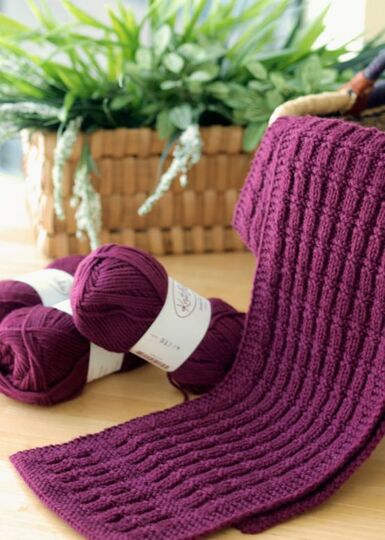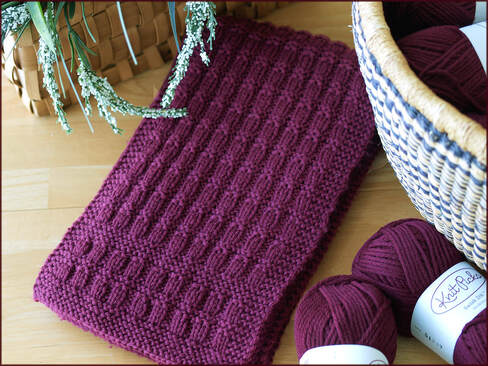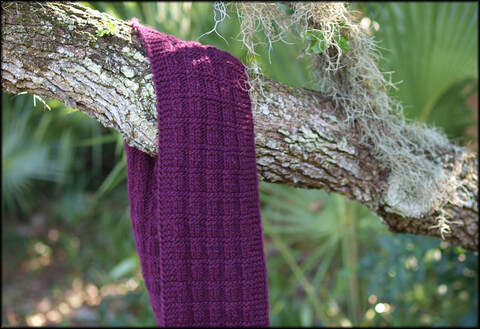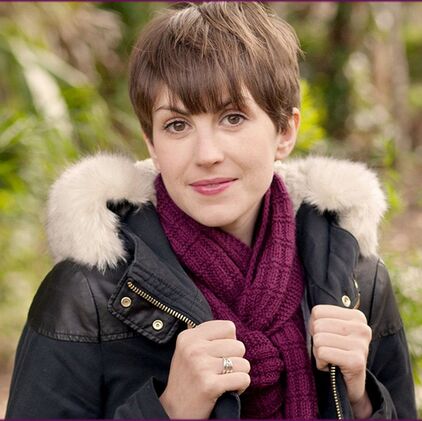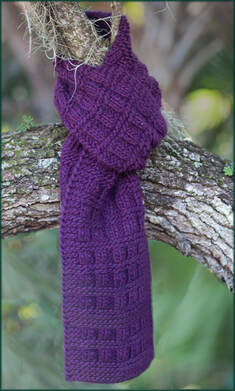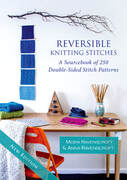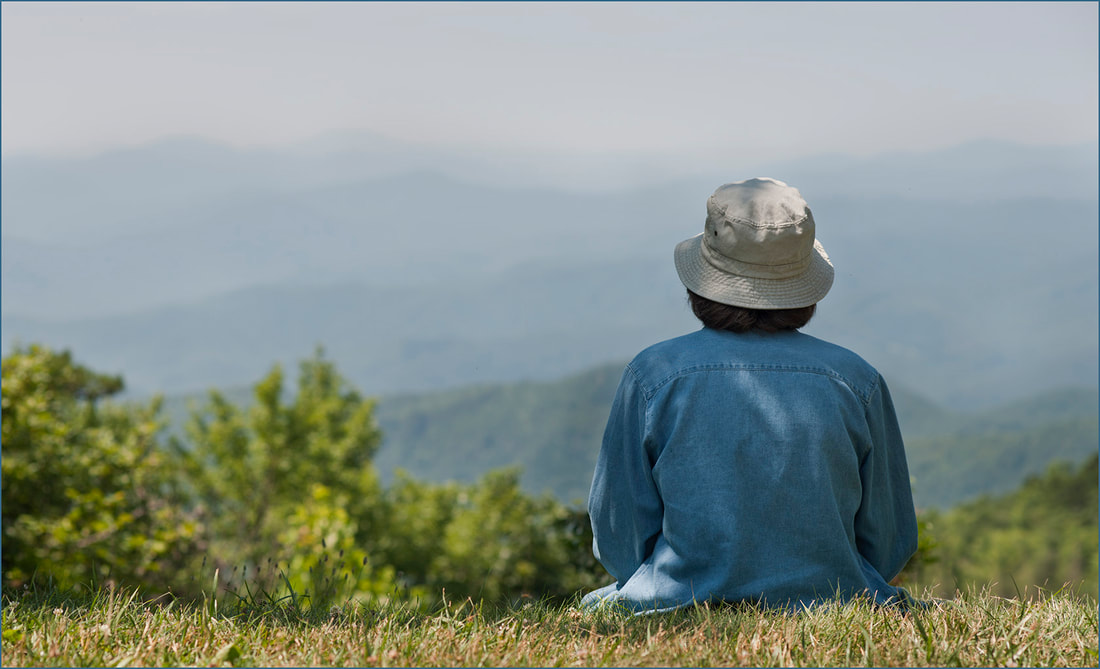However, this isn't the only benefit of a reversible design, as I discovered a few years ago. I had been gathering examples of reversible knitting stitches and designing some new ones. As each appeared, I added them in to a sampler like a huge long scarf. After a while there were about 100 different stitches – and that is when I made my discovery:
Every reversible stitch in the sample was flat!
It's also the reason why Garter Stitch becomes so compressed: because the lines of purl bumps on the back force themselves outwards to form pronounced ridges while the knits recede into tight valleys.
Reversible fabrics, though, have a wonderful balance between knits and purls on both sides, so the fabric lies compliant and flat while showing stunning textural effects. Simple!
For the Elizabeth Scarf, I used one of my favourite stitches from our Reversible Knitting Stitches book, Hatfield Check. This is an easy stitch to work but still has a lot of interest with a deep texture and contrasting vertical and cross-wise stripes. The scarf also features extra bands of Garter Stitch at each end for extra definition and detail.
I like long scarves as they lend themselves to all kinds of fancy scarf tie-ups, so I made this one 185cm/72 ins long. You can find lots of examples of interesting scarf knots and tying techniques on the internet, so this version is perfect for experimenting with all the new ideas. In the photo above, for example, you can see our daughter Anna modelling the scarf tied in a four-way knot. If you would like to see how this is worked, then please click here.
To see more details about the Elizabeth Scarf pattern, please click here. The pattern is available for instant download from the site so you will be able to start work on your new scarf today.
To read more about the benefits of using reversible stitches in your work, please click here, and for more information about our Reversible Knitting Stitches book, please click here.
Happy Scarf Knitting!
Moira
| Last Blogpost: Mentmore Socks Next Up: Rare Earth Cushions Our book: Reversible Knitting Stitches My Website: www.wyndlestrawdesigns.com |
reversible knitting, reversible stitches, flat, stitches stay flat, scarf, scarves, ladies scarf, DK yarn, chunky yarn, wool, merino wool, maroon, purple, z-R231114

